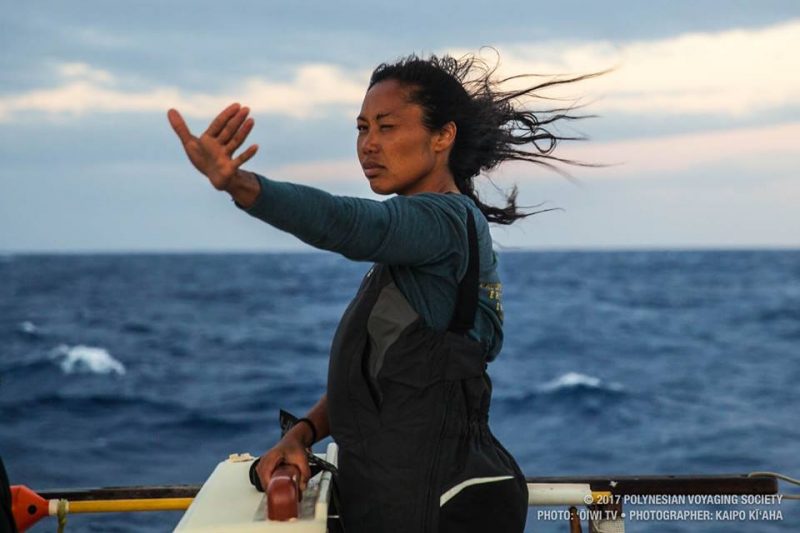
The Women Navigators
In this month’s Latitude, author Michael Kew brings us a dispatch from the South Pacific island of Yap, which could be considered the heart of the modest Polynesian Voyaging renaissance that’s taken place over the last four decades. While attending “Yap Day” in 2017, Kew met with navigator Ali Haleyalur, the cousin of the great Pius “Mau” Piailug, who was a mentor of the Polynesian Voyaging Society in the 1970s, and would go on to captain and navigate Hokule’a, the famed 62-ft, 12-ton, full-scale fiberglass replica of a double-hulled voyaging canoe.

The Polynesian Voyaging Society’s literature about the trip said that, “When Hokule’a arrived at the beach in Papeete Harbor, over half the island’s people were there, more than 17,000 strong. There was a spontaneous affirmation of the great heritage we shared, and a renewal of the spirit of who we are today. On that first voyage, we were facing cultural extinction. We had no navigators left. The Voyaging Society looked beyond Polynesia to find Mau Piailug from a small island called Satawal, in Micronesia. He agreed to come to Hawaii and guide Hokule’a to Tahiti. Without him, our voyaging would never have taken place. Mau was the only traditional navigator who was willing and able to reach beyond his culture to ours.”
Mau was so “so highly regarded,” Kew wrote, “that, in 2016, three years after his death, Matson, Hawaii’s biggest ocean cargo transport company, christened its newest ship — Papa Mau — in his honor.”
But it isn’t just men who have been a part of this revival. Navigator Kala Tanaka was one of many sailors who have gone on to voyage on the Hokule’a since Mau’s day. “Kala’s father, Kalepa Baybayan, is a master navigator, and was one of the original crew members on Hokule’a,” according to gohawaii.com.

The photo above shows “brilliant navigator Tanaka measuring where she needs to go using her hand,” wrote Eliota Fuimaono-Sapolu on her Facebook page. “You might’ve seen Moana do a weird version of it. Many Samoan hand tattoos have fish around the wrists and the stars and togitogi up the fingers. The thumb lays across the horizon while the fingers stand vertical as you align your markings with the stars.”


excellent article – thanks for sharing !!
Was listening to Jake play uke and reading this and tears were rolling down my cheeks. I read the book about Hokule’a. I’m a sailor on San Francisco Bay and can only imagine sailing with just your ability to pay attention and listen to the world speaking.
Dick — Glad you liked the piece. Was that Jake Shimabukuro?
Great piece! Let us not forget Captain Nainoa Thompson, an early member and leader of the PVS. He was instrumental in gettin Mau to join the Hokule’la and navigate it to Tahiti. He navigated the canoe on many long voyages around the Pacific and is considered a protege of Mau. I had the opportunity to make a short passage from Kaua’i to Oahu back in the 80’s. The trip was unsuccessful. We sailed a great circle throughout the night and ended back at Nawhiliwili, Kaua’i! Neither Mau or Nainoa were navigating on that voyage.
Wonderful.